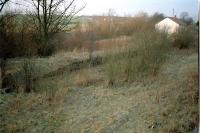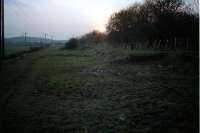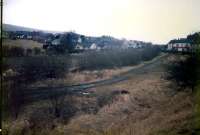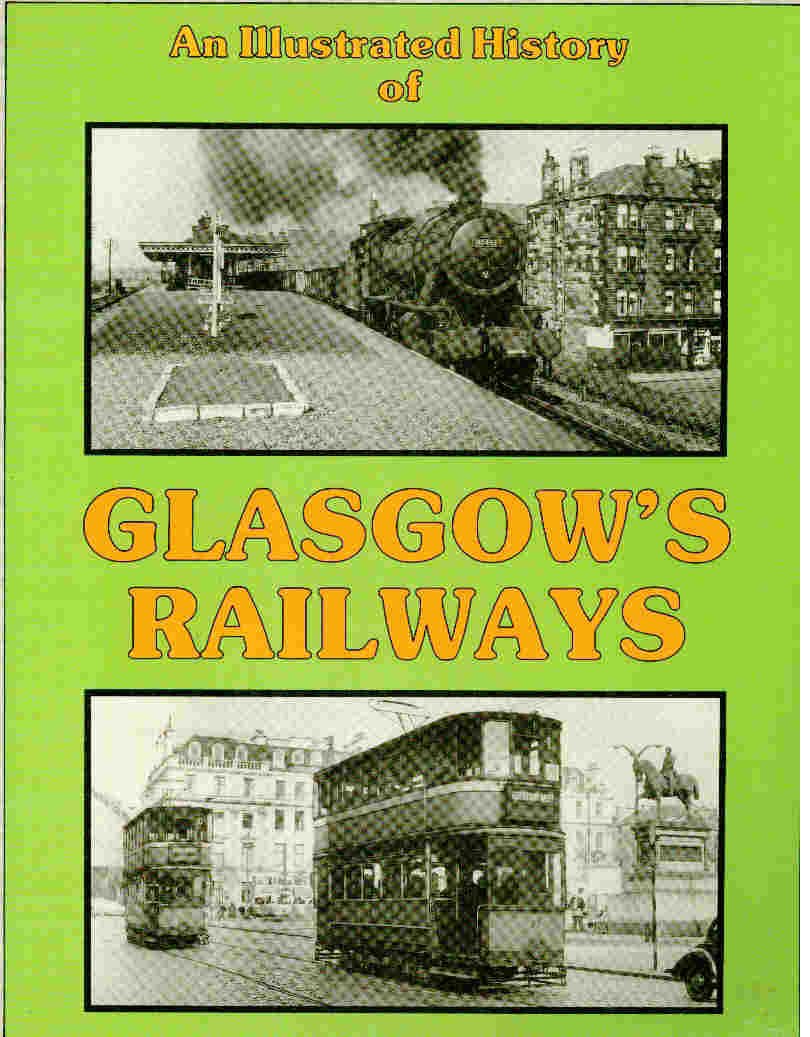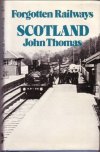Kelvin Valley Railway
Introduction
This railway is closed. The line ran from Kirkintilloch to Kilsyth and from Maryhill to Kilsyth. Its opening was in part due to the coal measures in the Kilsyth area and recent opening of the Stobcross Railway serving docks on the River Clyde.
The company had an argument with the North British Railway, which operated it, at the outset. The NBR initially refused to open the Maryhill to Kelvin Valley East Junction section. When it later did, it was opened as a self contained separated line.
The line opened throughout in 1879.
Its situation further improved with the opening of the Glasgow City and District Railway in 1886 allowing trains from Glasgow Queen Street Low Level to reach the western and eastern portions of the line while the east portion continued to be served from Glasgow Queen Street High Level.
The line connected with Bairds of Gartshore's Railway at Twechar, providing considerable coal traffic, and grew to serve several coal mines, sand pits and even a gun range.
The line closed to passengers in 1951. Torrance to Kelvin Valley East Junction closed in 1956. In 1958 the remaining part of the west portion of the line was used for DMU driver training. Torrance to Balmore closed in 1959. The remainder of the western portion closed in 1961. Twechar to Kilsyth [1st] closed in 1964. The final portion closed in 1966.
Dates
| / /1873 | Kelvin Valley Railway Kelvin Valley Railway authorised. |
| / /1877 | Kilsyth Railway Kilsyth Railway absorbed by Kelvin Valley Railway. |
| 01/06/1878 | Kelvin Valley Railway Opened to Kilsyth Old via Kelvin Valley West Junction (Birdston Junction), Kirkintilloch, to passengers and freight. Also given as the 3rd of June. |
| 04/06/1879 | Kelvin Valley Railway Opened to Maryhill [Temporary] (no connection made at this time to the Glasgow, Dumbarton and Helensburgh Railway) from Kelvin Valley East Junction (Birdston Junction) for freight. |
| 01/10/1879 | Kelvin Valley Railway Opened to passengers from Maryhill to Torrance, Maryhill East Junction opened. |
| 29/10/1880 | Kelvin Valley Railway Opened to passengers from Maryhill to Kilsyth [1st]. |
| 01/08/1885 | Kelvin Valley Railway
North British Railway Kelvin Valley Railway absorbed by North British Railway. (Alternative date 31/03/1886.) |
| /12/1936 | Haugh Colliery No 1 This pit (to the south of the Kelvin Valley Railway's Kilsyth [1st] station and opened by Merry and Cunninghame) closed by William Baird & Co. |
| 31/03/1951 | Kelvin Valley Railway Alternative date for closure to passengers from Kelvin Valley East Junction to Maryhill. |
| 02/04/1951 | Kelvin Valley Railway Kilsyth (Old) (Kelvin Valley East Junction) to Maryhill (Maryhill East Junction) closed to passengers. Maryhill Park Junction [1st] to Knightswood South Junction closed to regular passenger trains. |
| 04/08/1951 | Kelvin Valley Railway Closed to passengers from Kelvin Valley West Junction to Kilsyth (Old). |
| 24/06/1956 | Kelvin Valley Railway Kelvin Valley East Junction to Torrance (excluded) closed to freight. |
| / /1958 | Kelvin Valley Railway Maryhill East Junction to Torrance used for DMU driver training. |
| 05/10/1959 | Kelvin Valley Railway Torrance to Balmore (excluded) closed to freight, although subsequently used by tour train in 1960. |
| / /1960 | Kelvin Valley Railway Line used between Maryhill and Torrance by tour train hauled by Glen Douglas visiting Torrance. |
| 06/06/1961 | Kelvin Valley Railway Alternative date for Kilsyth Old to Kirkintilloch (Kelvin Valley West Junction) closed to passengers. |
| 31/07/1961 | Kelvin Valley Railway Balmore to Maryhill East Junction closed to freight, but retained for a short period for coal to Summerston [1st]. |
| 04/05/1964 | Kelvin Valley Railway Kilsyth (Old) to Twechar (excluded) closed to freight. |
| 04/04/1966 | Kelvin Valley Railway Twechar to Kelvin Valley West Junction closed to freight. |
Portions of line and locations
This line is divided into a number of portions.
Maryhill to Kilsyth
This closed single track line ran from Maryhill East Junction to Kilsyth (Old).
The Kelvin Valley Railway (1879) met the existing Glasgow, Dumbarton and Helensburgh Railway (1858) at a junction which allowed eastbound trains to take the branch from the main line. The junction was also known as Kelvin Valley Junction.
...
See also
Glasgow, Dumbarton and Helensburgh Railway
This was the temporary western terminus of the Kelvin Valley Railway built during an argument between that company and the North British Railway, who operated the line.
...
This colliery was north of Maryhill at Balmuildy with Blackhill Farm to the south west. The colliery opened around 1873, about the time the Kelvin Valley Railway opened (1879) and was owned by the Summerlee Iron Co.
...
See also
Summerlee Iron Co
This was a single platform station. The platform was on the west side of the line with a small timber station building at its north end, next to the railway cottage (which survives). The building was more Glasgow and South Western Railway (eg Fairlie) in style than North British Railway. A pair of sidings left the station at the south end of the platform alongside the signal box.
...
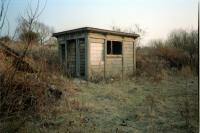
Ewan Crawford //1987
This was a single platform station.
...
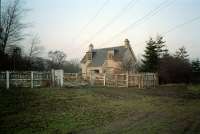
Ewan Crawford //1987
This was a single platform station. The platform was on the north side of the line. It was a minimal station. There was a siding, approached from the west, on the south side of the line with a loading bank. To the east Glenorchard Road crossed over the line and to the west the line crossed over what is now the A807. A second siding was added around 1900.
...
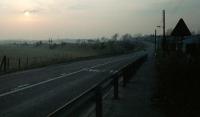
Ewan Crawford //
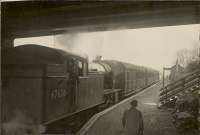
G H Robin collection by courtesy of the Mitchell Library, Glasgow 31/03/1951
This was a single platform station.
...
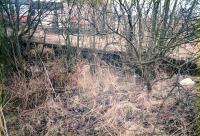
Ewan Crawford //1987
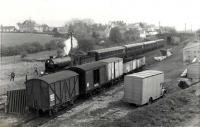
G H Robin collection by courtesy of the Mitchell Library, Glasgow 30/04/1960
This sand pit was served by a siding. It was to the east of Torrance station, on the south side of the line, and accessed from west.
...
This sand pit was on the south side of the Kelvin Valley Railway east of Torrance.
...
This sand pit was served by a siding from the Kelvin Valley Railway. There was a loop on the north side of the line and a siding, served from the east, into the sand pit.
...
This junction was between two parts of the Kelvin Valley Railway. The railway ran east to Kilsyth [1st] and could be approached from Kirkintilloch [2nd] to the south and Maryhill to the west.
...
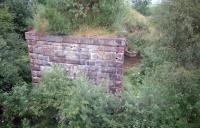
Ewan Crawford //1987
This sand siding was on the south side of the line immediately east of Kelvin Valley East Junction. Access was from the west.
...
This signal box provided access to the Auchenreoch Colliery. This mine was on the north side of the line and a siding ran west to the mine from the railway. ...
More details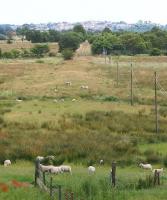
David Forbes /07/2009
This was a typical small North British Railway style station, with a building typical of the NBR. However there was a large yard on the south side of the line, accessed from the east.
...
See also
Bairds of Gartshore^s Railway
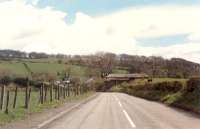
Ewan Crawford //1990
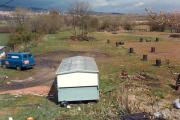
Ewan Crawford //1990
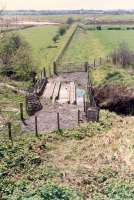
Ewan Crawford //1990
This was a small single road shed on the north side of the Kelvin Valley Railway at Kilsyth Junction. There was direct access from Kilsyth (Old) (to the east) but not from the Kilsyth and Bonnybridge Railway.
...
This was the junction where the Kilsyth and Bonnybridge Railway met the Kelvin Valley Railway. Kilsyth Shed was located to the north, approached from the junction to the east.
...
See also
Bairds of Gartshore^s Railway
Kilsyth and Bonnybridge Railway
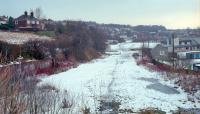
Ewan Crawford //1991
The first station in Kilsyth was a single platform terminus to the west of the town. There was a loop, with the platform on the north side, and a goods yard to the north, all approached from the west where Kilsyth Shed was located.
...
Kelvin Valley Curve
A short curve ran from Kelvin Valley West Junction to Kelvin Valley East Junction. This allowed trains from [[Glasgow Queen Street] to run via Lenzie and the Lennoxtown Branch before joining the Kelvin Valley route.
This was the junction between the Campsie Branch (Edinburgh and Glasgow Railway) of 1848 and a spur from the Kelvin Valley Railway of 1878.
...
See also
Campsie Branch (Edinburgh and Glasgow Railway)
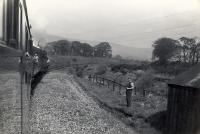
G. H. Robin collection by courtesy of the Mitchell Library, Glasgow. 03/05/1958
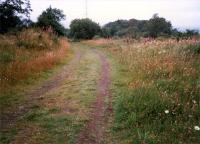
Ewan Crawford //1987
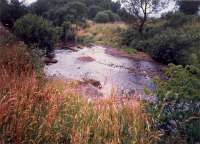
Ewan Crawford //1987
This junction was between two parts of the Kelvin Valley Railway. The railway ran east to Kilsyth [1st] and could be approached from Kirkintilloch [2nd] to the south and Maryhill to the west.
...

Ewan Crawford //1987
Kilsyth Gas Works
This was the junction where the Kilsyth and Bonnybridge Railway met the Kelvin Valley Railway. Kilsyth Shed was located to the north, approached from the junction to the east.
...
See also
Bairds of Gartshore^s Railway
Kilsyth and Bonnybridge Railway

Ewan Crawford //1991








